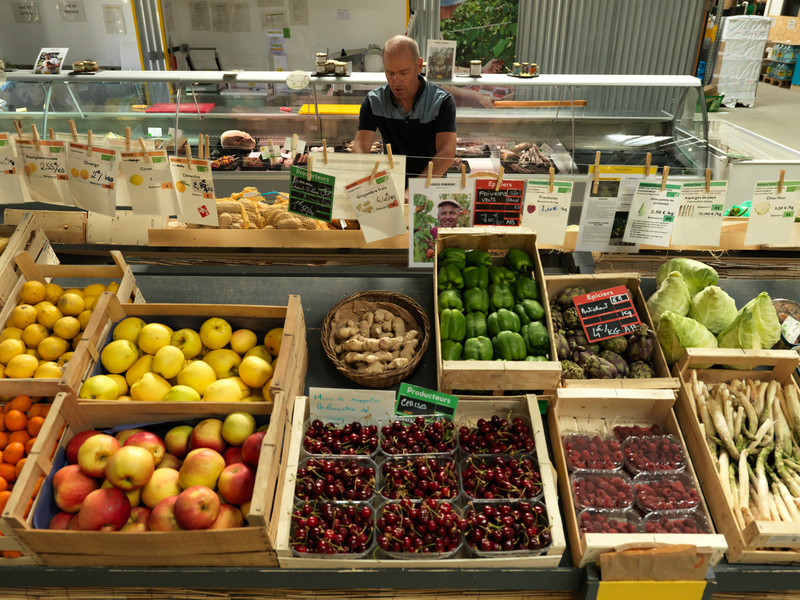- About
- Topics
- Story
- In-Depth
- Picks
- Opinion
- News
- Donate
- Signup for our newsletterOur Editors' Best Picks.Send
Read, Debate: Engage.
| May 19, 2018 | |
|---|---|
| topic: | Conservation |
| tags: | #plastic, #bioplastics, #pollution, #Plexit, #PET |
| by: | Michael Braungart, Suki Kler Young, Niklas Jonas |
Recent figures endorse the urgency to act: Globally 1.5 to 4% of global plastics production end up in the oceans every year (which goes some way in answering the question as to what pollutes the ocean). Between 75,000 and 300,000 tons of microplastics (particles smaller than five millimeters) are released into the environment each year in the EU, damaging ecosystems, marine mammals and humans at the end of the food chain.
The sources of microplastics are diverse: of plastic packaging, which represents about one quarter of the overall volume of plastics used, only 14% is collected worldwide for recycling and mostly downcycled into lower-value products. A large part is derived from private households, for example cosmetics products or washing machines, from which fibres from synthetic textiles are transported, caught in the sewage sludge and later end up on our fields in some countries as fertiliser. Even car tires lose their substance over time (around 1 to 1.5 kg of their weight in 4 years) and release tiny particles in the form of fine dust or microplastics.
Despite raised public awareness, plastic production levels are expected to rise significantly. The question is: can we create a new plastics economy or will we head towards a “Plexit” strategy based on the avoidance of plastics?
Choosing the right plastics strategy
To put it simply, the main reason for the widespread use of plastics lies in its economic advantages. Even though the initial material costs are low, between USD 80–120 billion are lost to the economy annually because of short first-use cycles and poor recycling rates. Nevertheless, the incentives for companies to improve their plastic products or to optimise recycling streams remain very low due to comparably high innovation and implementation costs. Realistically, plastics won’t disappear from daily use anytime soon. This means that we must rethink our plastic consumption and choose the best optimisation strategy for each scenario.
A comparably simple and increasingly common approach to tackle plastic waste in the business-to-consumer sector is phase-out. Due to the raised media coverage, more and more retailers and customers have become aware of the negative impacts of plastic packaging and products and have started to reduce or even stop their usage, for example of plastic bags in supermarkets. However, as packaging has become essential to guarantee safe and healthy food, a complete renunciation is unlikely.
This partly leads to another strategy: substitution. Plastic bags are replaced by cloth bags or plastic packaging by paper packaging. But a replacement is not available for every product (or is not economically reasonable). For this reason, the development of bioplastics has been strongly promoted in recent years and has made noticeable progress. Considering climate change and increasing population numbers, the substitution of plastic through bioplastics (based on raw materials like grain, corn or sugar) on a global scale is controversially discussed. For now, biodegradable plastics are less competitive in terms of functionality, recyclability and costs and are mainly compostable only under controlled conditions. However, if more money is invested in research and development for recyclable bioplastics, they could play an important role in plastic products which could safely leak into natural systems.
A third option takes us back to the EU strategy mentioned earlier, which aims for high-quality plastics optimised for a circular economy. Currently, plastics are made from a range of polymers based on fossil fuels and are highly customised to meet each manufacturer’s functional and aesthetic requirements. This diversity complicates the recycling process, increases recycling costs, and affects the quality and value of recycled plastic. Better design of plastic products, higher recycling rates, more and better quality recyclates could help boost the market for recycled plastics. This could be achieved by using high-quality PET recyclates (e.g. as applied by Cradle to Cradle pioneer Frosch) or polymers which are recyclable by depolymerisation like Nylon 6 (e.g. Auquafil’s Econyl®) or PLA (e.g. Synbra’s BioFoam®).
A systemic change: polluter pays
The leakage of plastics into natural systems cannot be completely prevented and remains a challenge; on a global scale bioplastics won’t replace conventional plastics anytime soon. Therefore the creation of plastic waste must come with a price. Companies that develop products which contain problematic ingredients, are nonrecyclable and basically designed for the incinerator, should take responsibility or must be held accountable by legal frameworks. The same applies to customers who throw away valuable resources and pollute the environment.
The deposit system for plastic bottles in parts of Europe has shown its applicability, why not expand this system to plastic packaging? Only then will it be economically worthwhile to take back/return plastic packaging or to develop alternatives. We need a feasible and systematic approach, including for upcoming ecologically safe (bio)plastic products. To achieve progress, governments, recycling initiatives and companies along the entire supply chain must understand the need for cooperation and come together to optimise products and collection schemes, as well as sorting and recycling technologies.
The authors of this article are leading experts of the Circular Economy. We thank EPEA: The cradle to cradle for providing these insights.
By copying the embed code below, you agree to adhere to our republishing guidelines.
